Ruined Castles
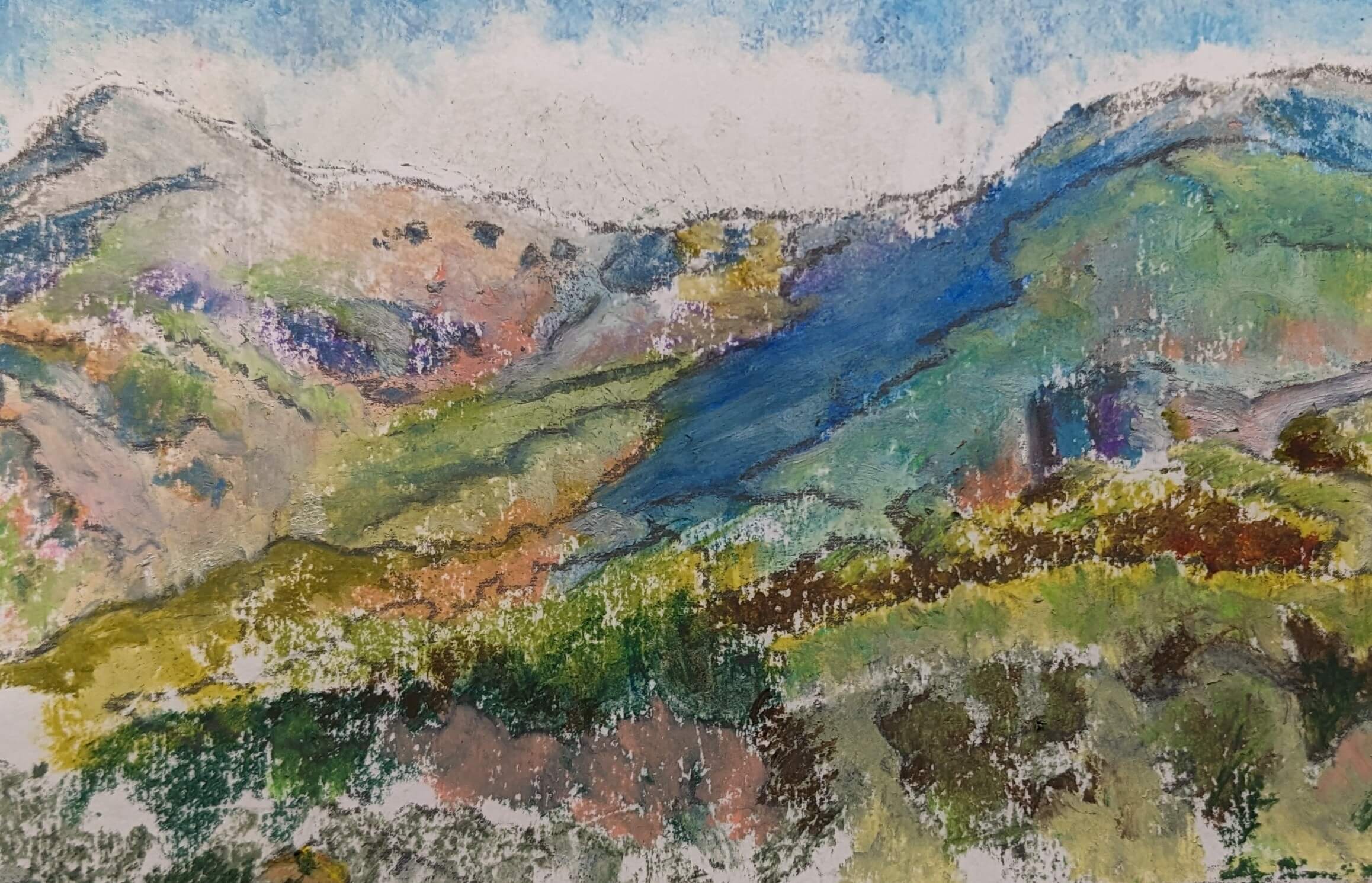
The Last Tower, Dolbadarn Ruins
Oil pastels
The sturdy round tower which was built with local stone overlooks the waters of Llyn Padarn. It is a lonely spot now, but was once part of a larger castle watching over a strategic route from Caernarfon to the upper Conwy Valley. It would have been part of the defences of the ancient kingdom of Gwynedd.
2023
Framed behind glass
46 x 34cm
£375
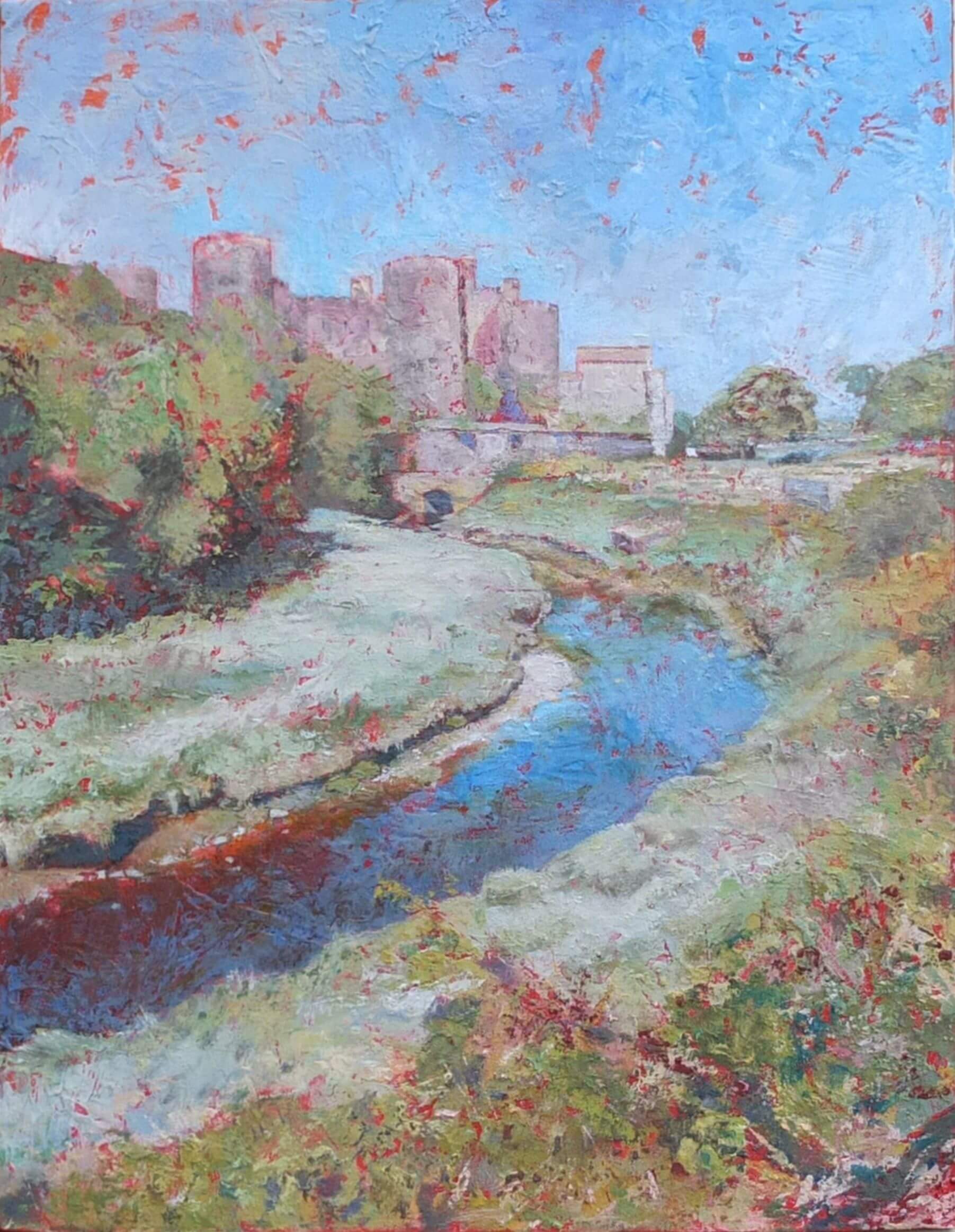
Stream at Conwy
Acrylic
An unusual view of Conwy Castle with a stream in the foreground. I've worked up the painting on a terracotta base, followed by an underpainting. The layers add to a richness and depth, though the whole is a light sunlit image.
2022
Unframed
30 cm x 40cm
£450
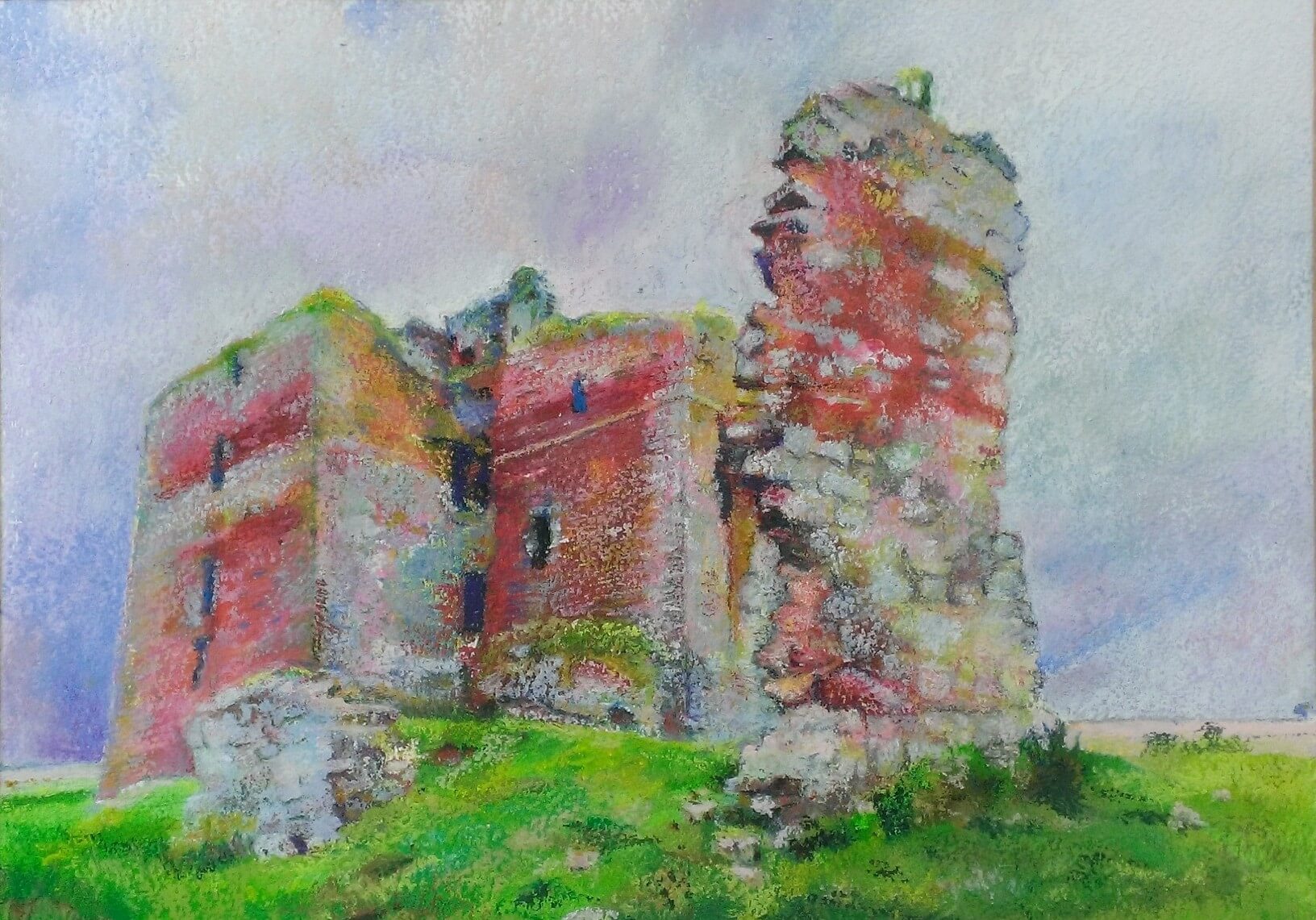
Reivers’ Feud
Acrylic + oil pastel on paper
Currently on show at the Huabhaig Open Exhibtion
When we were little we occasionally had a picnic in the field by Cessford Castle, and I took my family there when they were small. Now even more ruined, and still full of pigeons, but very much part of the history of the Border Marches and the raids from the feared Reivers. Cessford was the principal stronghold of the Kerrs, notorious Border Reivers, many of whom served as Wardens of the Middle March. Reivers is the derivation of bereaved….
2019
Framed behind glass, white wood frame
40.5 x 47cm
POA
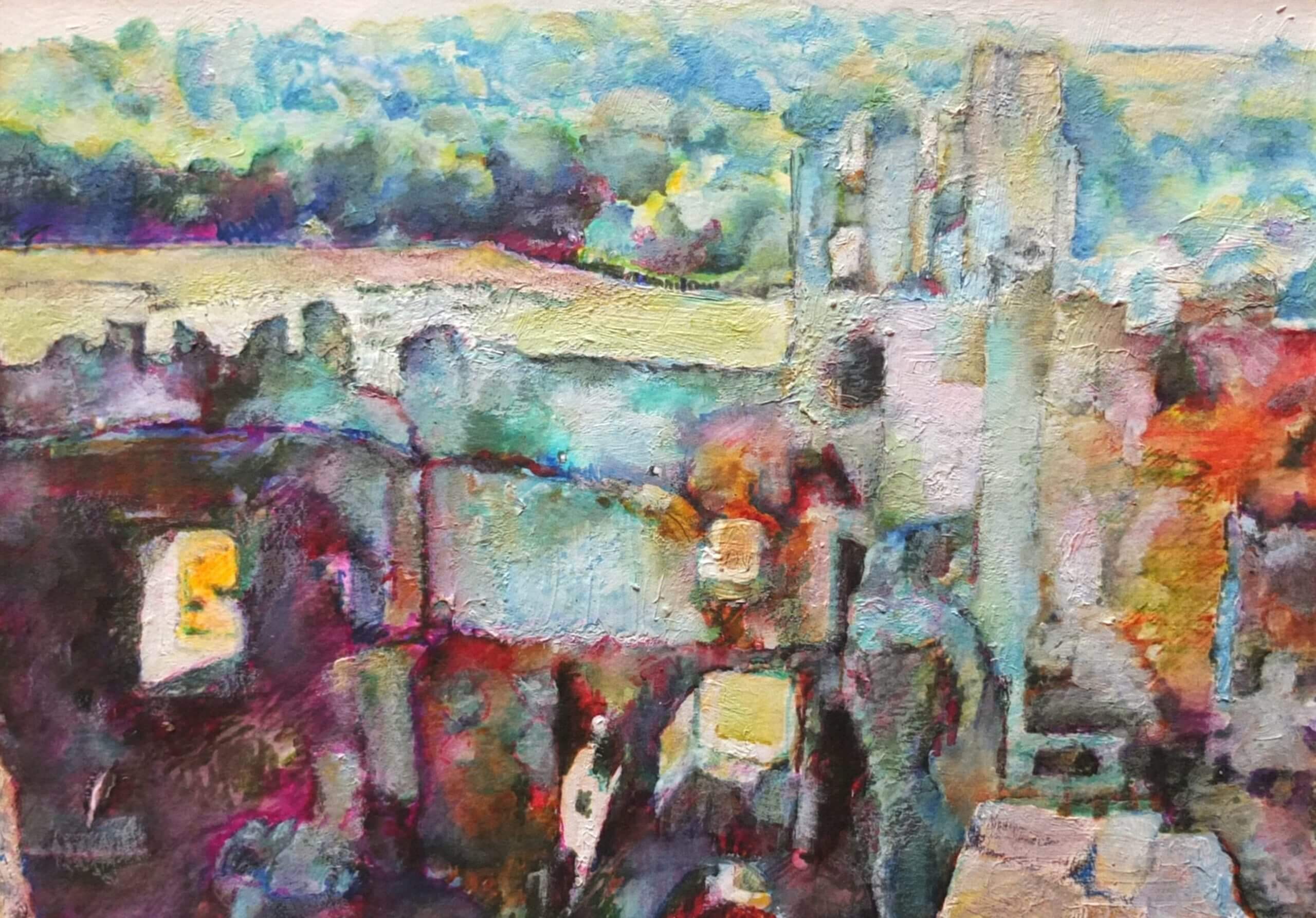
Castle Colours
Mixed media on paper + oil pastel on paper
Taking in the view from the top of an unusually complete tower with an original roof, from the castle towards the estuary.
Laugherne Castle, Carmarthenshire, was where Dylan Thomas spent time writing from a small studio built on the defensive walls. Located on the estuary of the River Tâf, established in 1116 then rebuilt as a Norman stronghold in 1215. It's seen many alterations over time, including becoming a Tudor fortified manor house in the sixteenth century. It changed hands twice during the English Civil War, being eventually captured by Parliamentary forces in 1644.
2016
Approx. A3
Mounted behind glass
£310
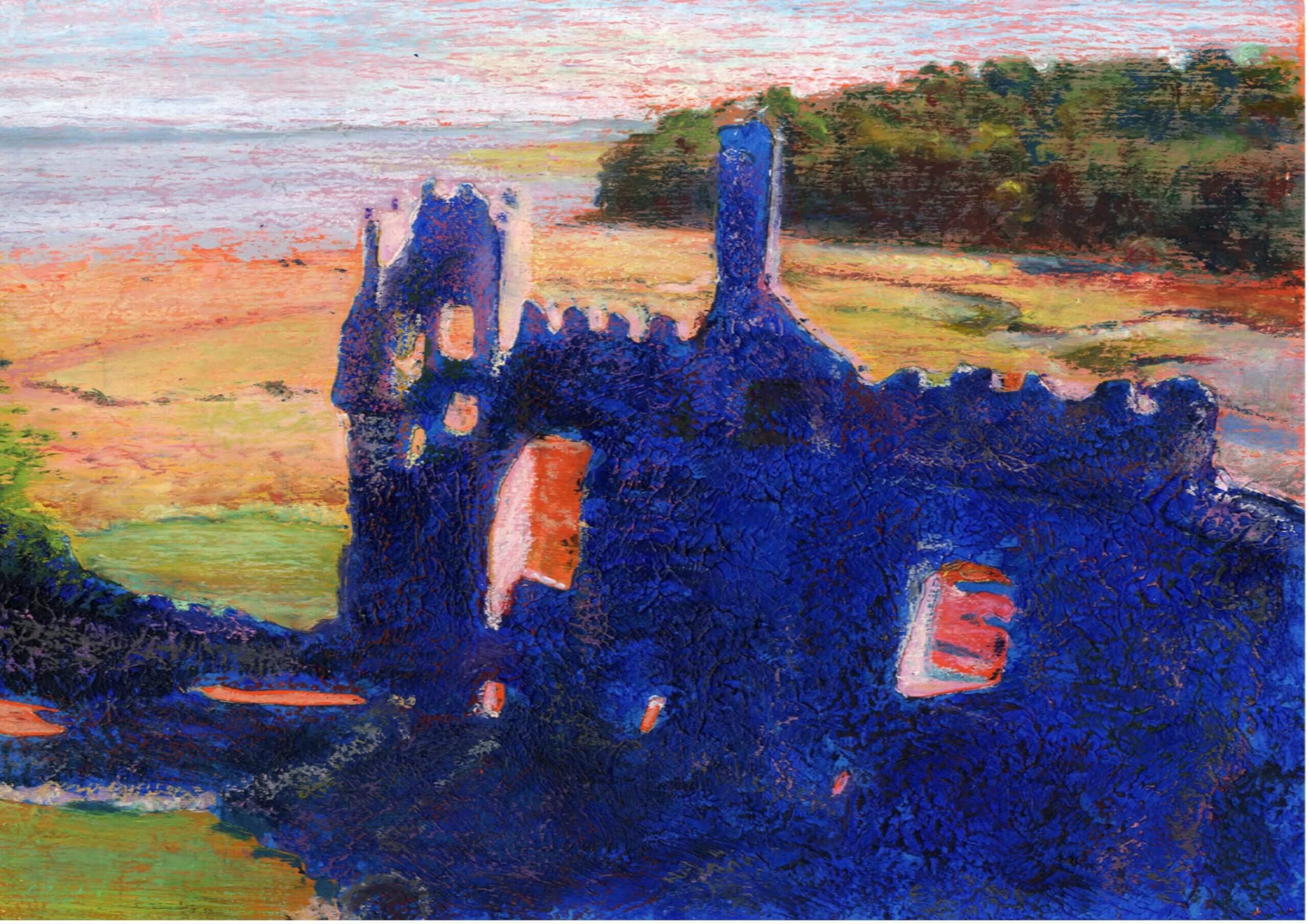
Castle Silhouette
One of four paintings of Laugharne Castle in Camarthanshire. I loved the drama of the dark castle against the softness of the estuary.
Mixed media
2016
A4
Unframed in a mount
£225
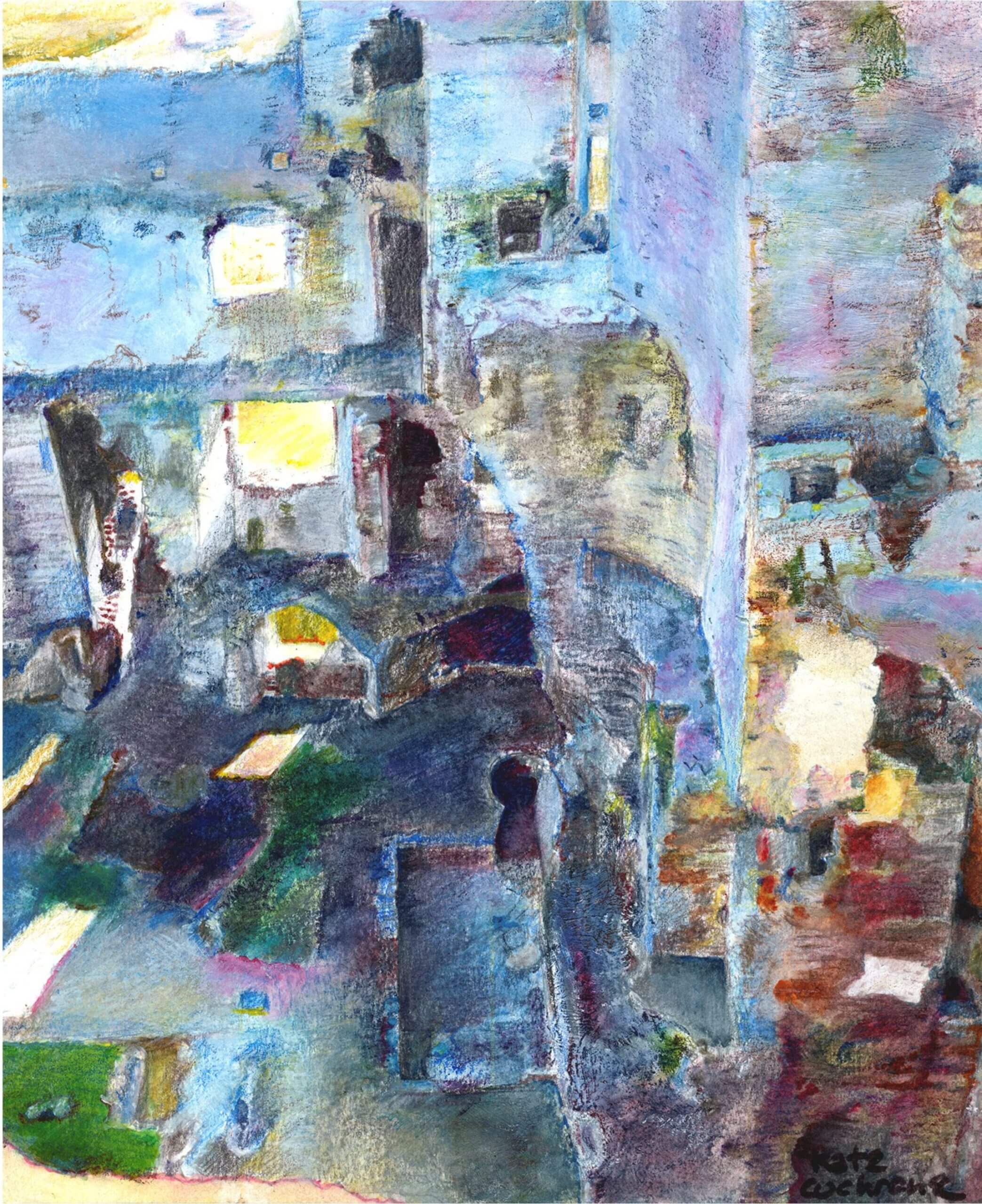
Castle Courtyard
The castle is a wonderfully dramatic subject with its setting against the estuary. I loved the punctuation of light coming through the broken windows on the opposite walls, as seen from the top of the tower.
Mixed media
2016
A4
Framed behind glass
£295
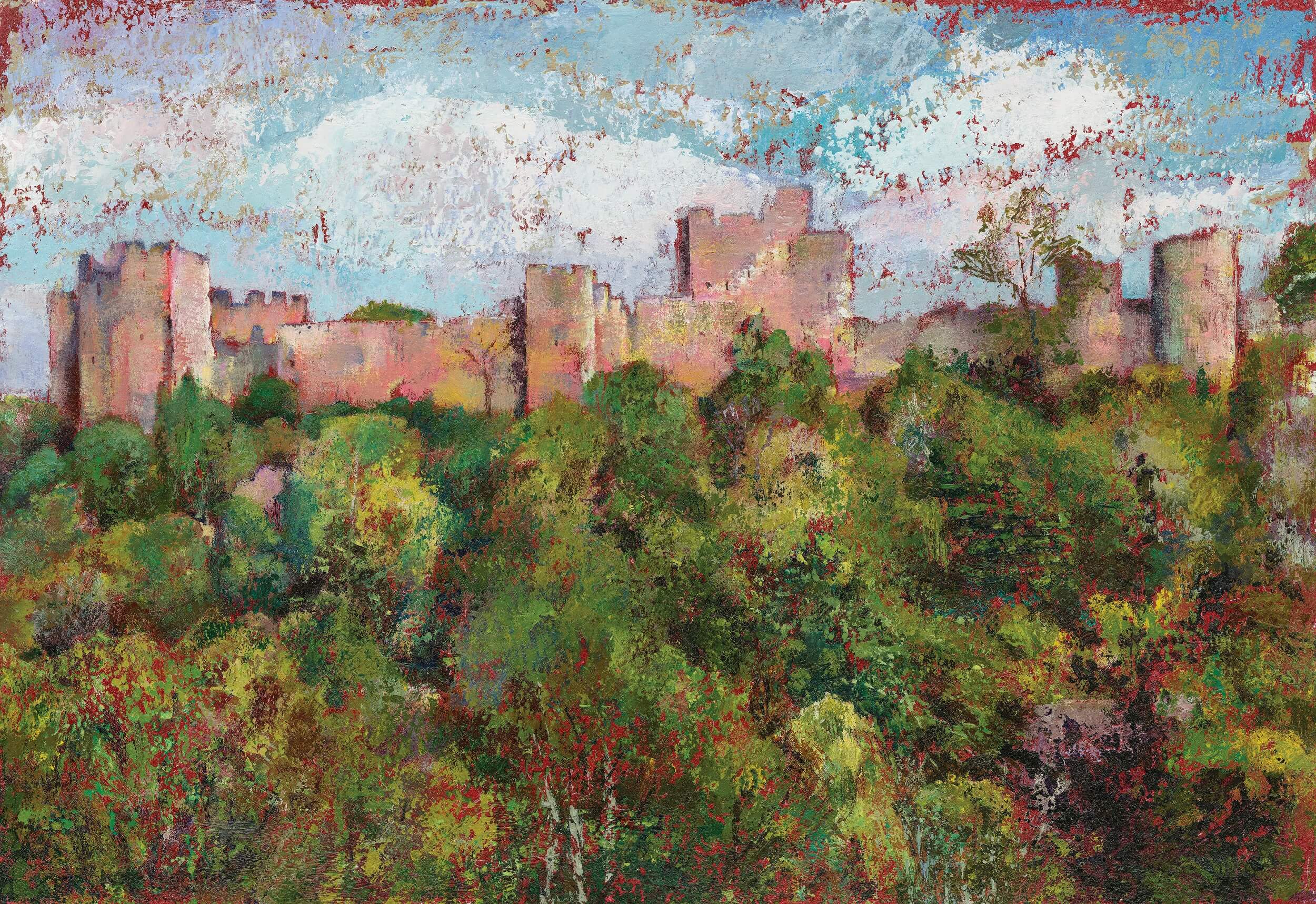
High Power, Ludlow Castle
Acrylic on paper
Ludlow castle is a ruined medieval fortification, standing on a promontory overlooking the River Teme. It is thought to have been founded by Walter de Lacy after the Norman Conquest, and was one of the first stone castles to be built in England.
I chose to take a view of the castle from the other side of the river to capture the imposing brooding power from its position high over the valley.
2018
49 x 67 cm
Framed behind glass
£820

Quiet Desolation
Oil on board
Dunstanburgh Castle is dramatic romantic ruin standing high on a remote headland on the Northumberland coast. It was once a magnificent structure though is now decaying quietly over time. The only way to reach the castle is on foot and it is a lovely walk with the sea close by and often very windy. The silhouette of the ruin is almost unreal with the towers always appearing on the verge of collapse.
2017
49 x 65 cm
Dark wood tray frame
£980
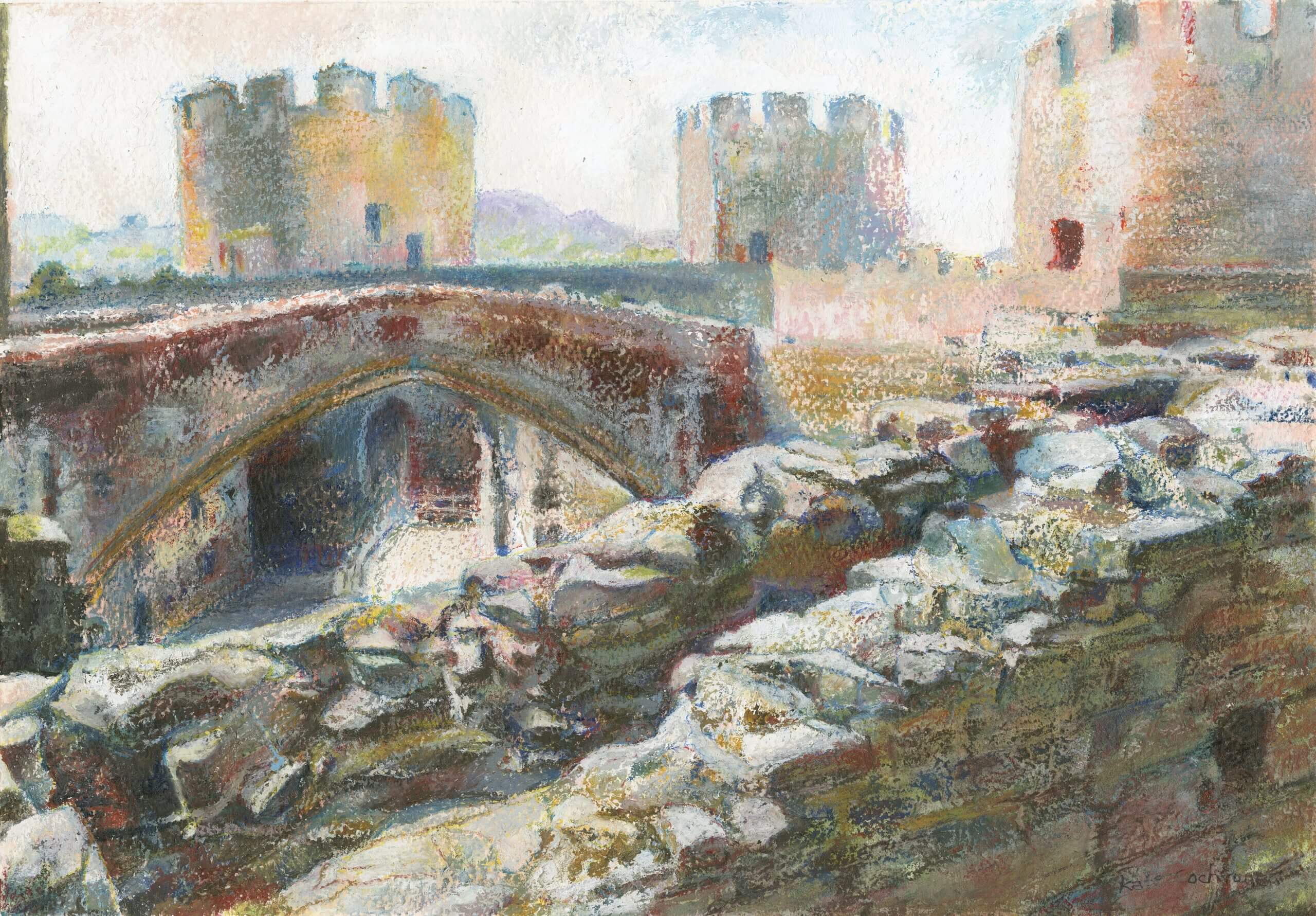
Carnarvon Depths
Mixed media on paper
Currently on show at the Hulabhaig Open Exhibition
Caernarfon Castle was a motte-and-bailey castle from the late 11th century until 1283 when King Edward I of England replaced it with the current stone structure. The town and castle acted as the administrative centre for North Wales, and as a result the defences were built on a grand scale. One of several castles built by Edward I during his reign and a truly impressive building. A view from the top of the castle ruins looking down into the Great Hall.
2019
56 x 44 cm
Pale wood frame behind glass
£375
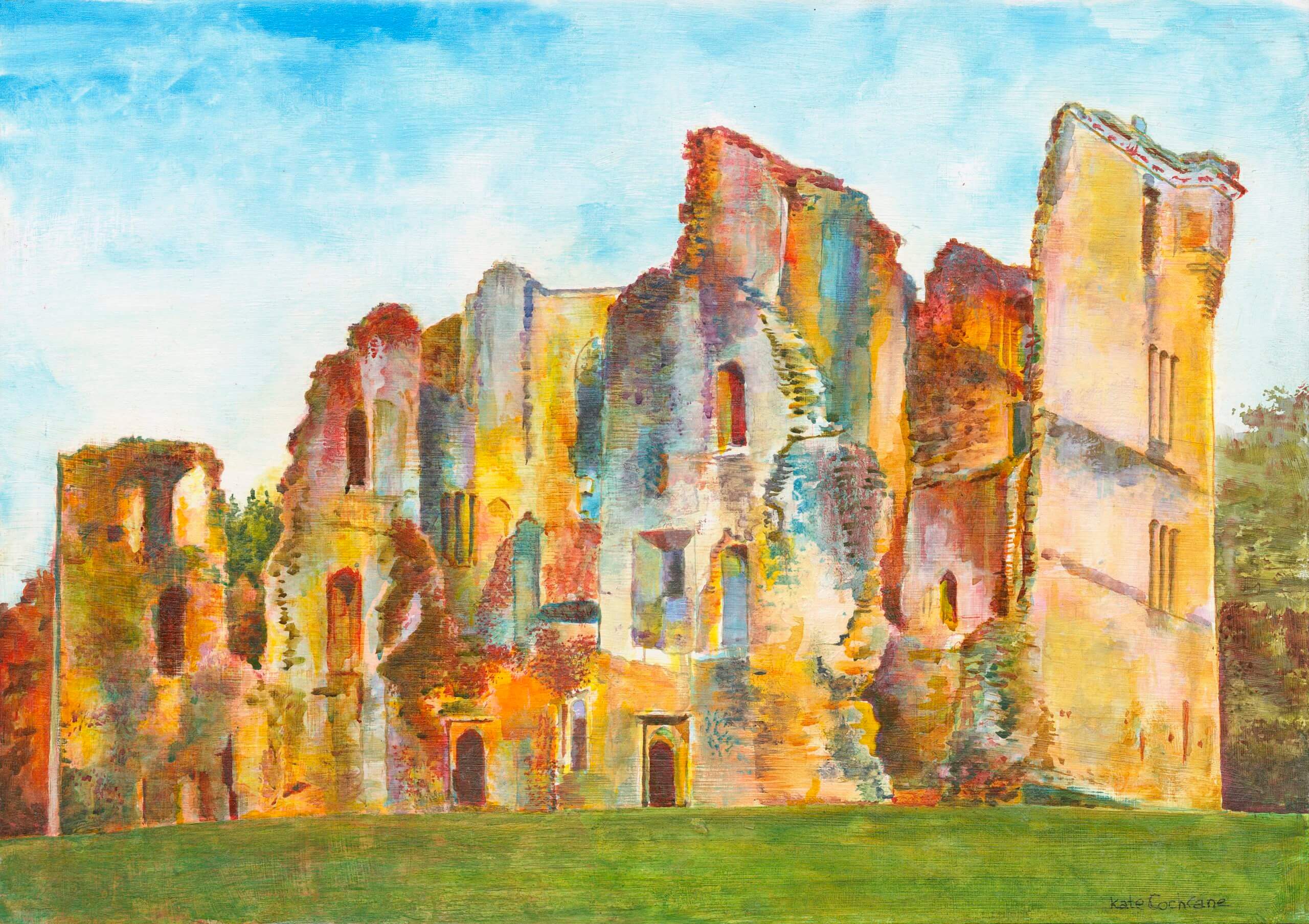
Lack of Civility
Acrylic ink on paper
Set in the Wiltshire countryside by a lake, Old Wardour Castle was built in the 14th century as a lightly fortified luxury residence becoming one of the most daring and innovative homes in Britain. In May 1643 Lady Blanche Arundell, was left to defend the castle after refusing a search for Royalists. Following a siege of five days the castle was threatened with complete destruction. Although agreeing to surrender, Lord Arundell’s son, Henry, blew up much of it the following year.
2019
49 x 34 cm
Framed behind glass
£530
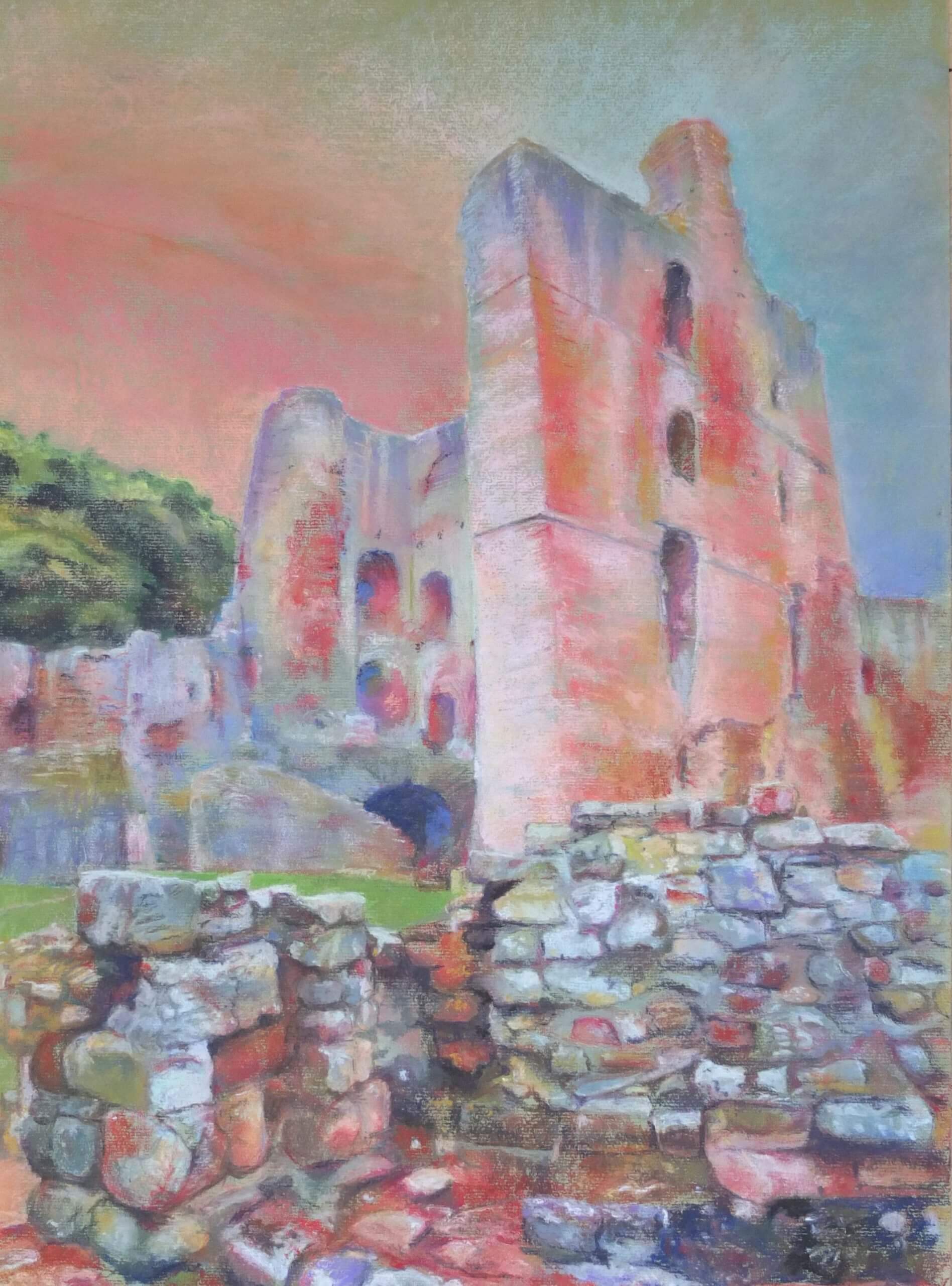
2016
Size: approx. A2
Framed under glass
£830
Battled Towers, Norham Castle
Pastel on paper
A castle in the Borders I have visited many times since small – many picnics with my family and with my children, and we’ve all had fun sketching amongst the ruins.
Day set on Norham's castled steep,
And Tweed's fair river, broad and deep,
And Cheviot's mountains lone:
The battled towers, the donjon keep,
The loophole grates where captives weep,
The flanking walls that round it sweep,
In yellow lustre shone.
The warriors on the turrets high,
Moving athwart the evening sky,
Seemed forms of giant height:
Their armour, as it caught the rays,
Flashed back again the western blaze
In lines of dazzling light.
Walter Scott from ‘Marmion’
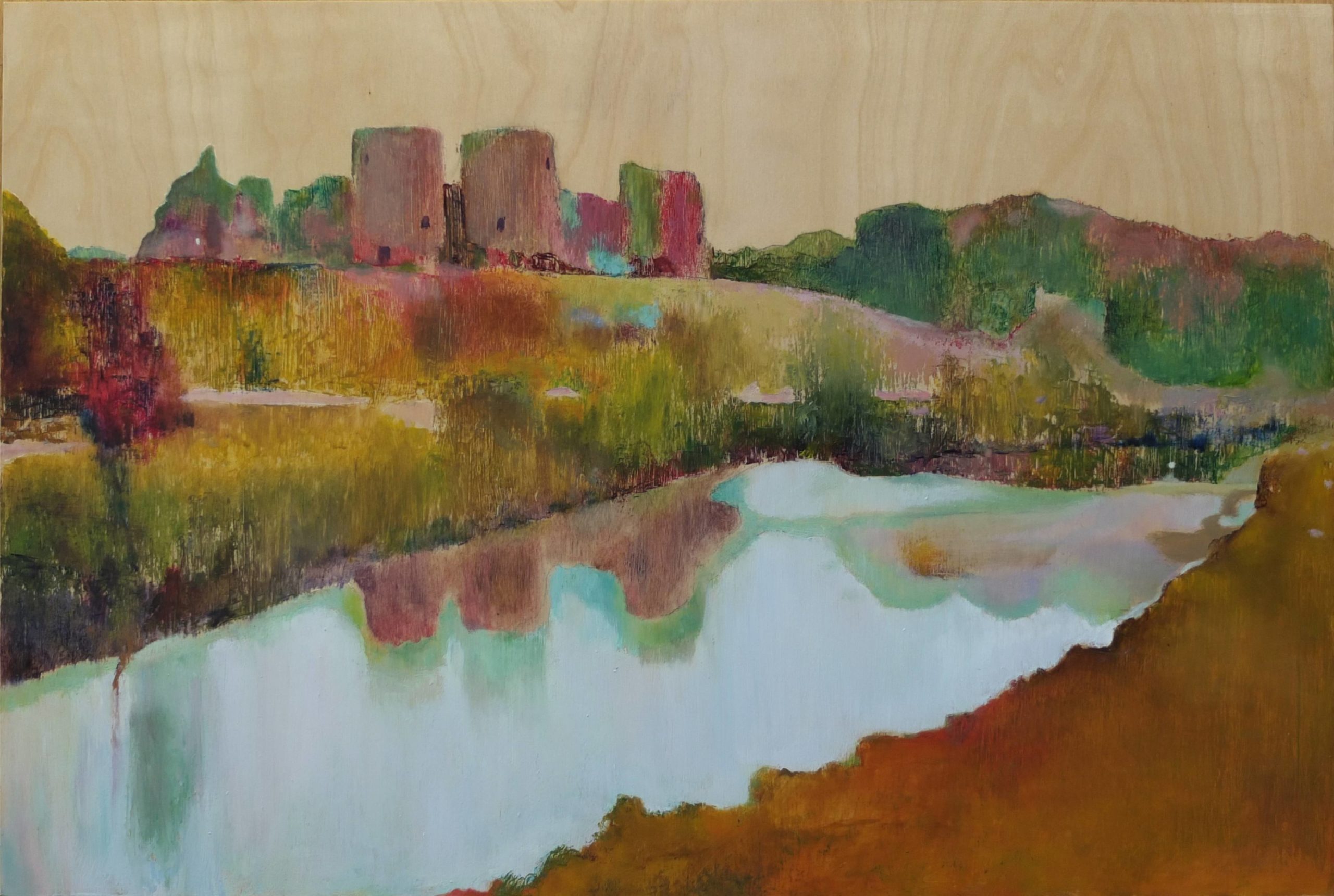
Rhuddlan Mourning
Oil on board
Edward 1 preferred his castles to be on the coast for easy delivery of supplies. The River Clwyd was deepened and diverted by hundreds of diggers to bring ships up to the massive dominating castle, built 1227 – 1282. It was the first of the revolutionary concentric - walls within walls - designed by James of St George. Meaning ‘red bank’, Rhuddlan’s fiercely contested strategic location led to much bloodshed, with the castle deteriorating by the beginning of the 16th century. It was partially demolished in 1648 to prevent any further military use.
It was difficult to view the castle from a distance, but I liked the reflection in the river on the quiet and overcast morning.
2017
unframed
51 x 76cm
£650
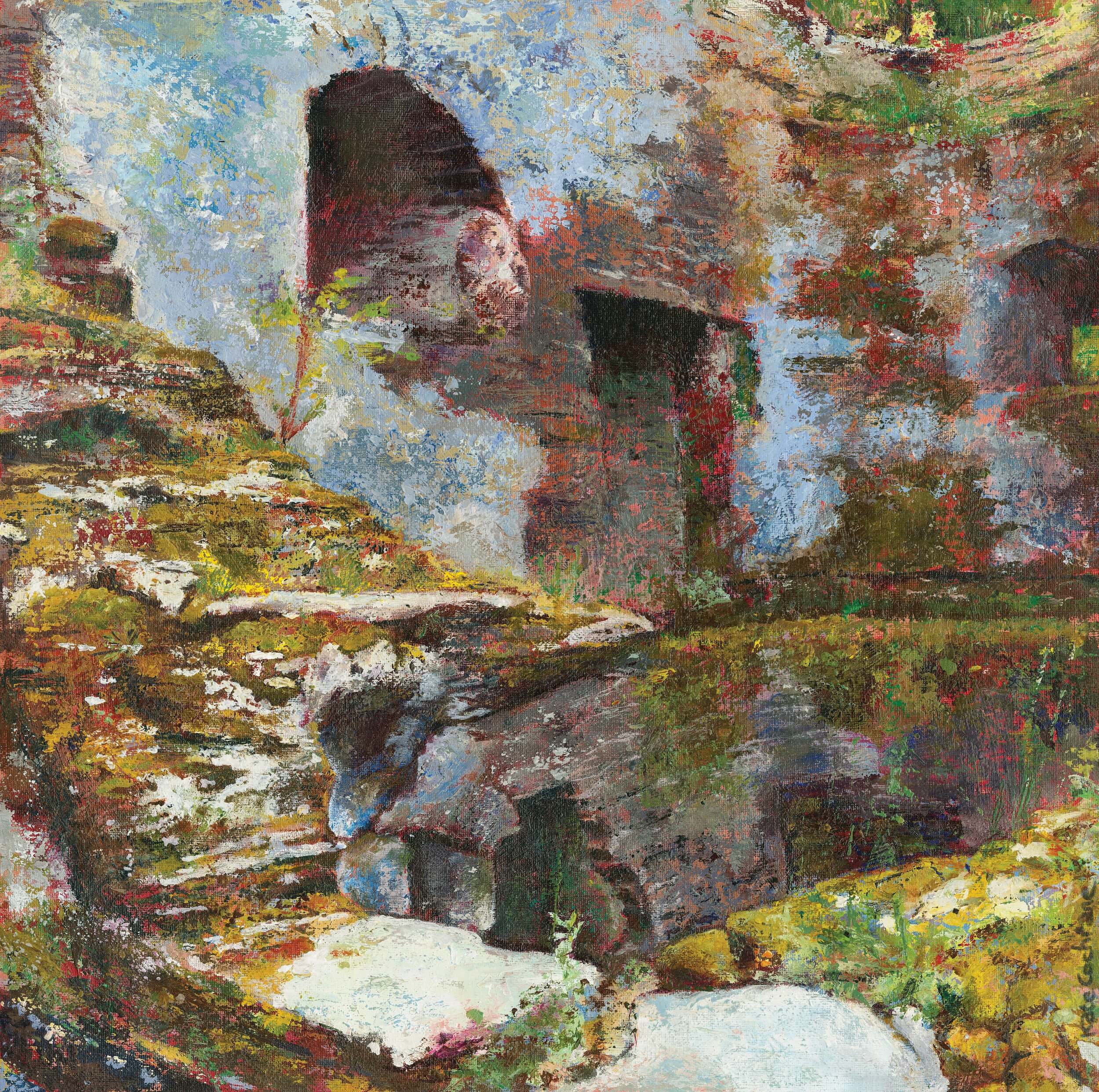
Arcane Shadows - SOLD
Gouache & Acrylic on paper
At Berry Pomeroy, the Seymour’s ruined Elizabethan mansion lies within the remains of the unfinished 15th Century Pomeroy family castle. Around 1600 the house was extended to create a palatial building to rival Longleat or Audley End. Lack of funds halted the works and by 1700 the castle was abandoned.
Now a romantic ruin on the edge of a deeply wooded valley it became an example of a picturesque ruin as a popular tourist destination, and is rumoured to be haunted.
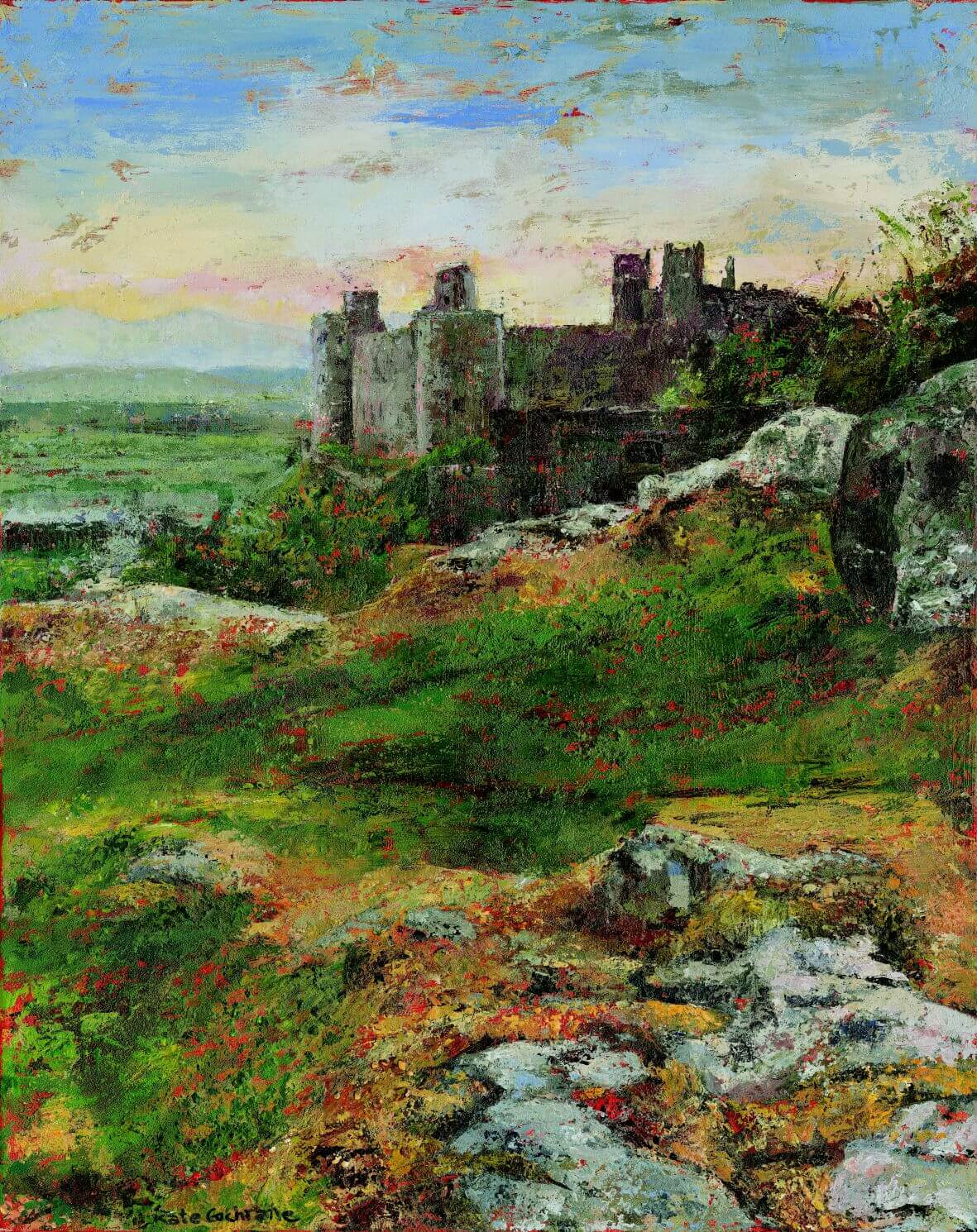
Under the Stones
Acrylic on canvas
Placed to keep watch over Snowdonia by Edward 1 in the late 13th Century, the castle is at one with the landscape, seeming to grow naturally out of the rock. One of the most formidable in an iron ring of fortresses, though it was taken by Welsh leader Owain Glyn Dwr in 1404.
As with so many castles, I wonder about forgotten events that must have occurred outside the castle during its long history. Perhaps old secrets remained buried and forgotten and will do so time out of mind.
2018
Dark wood tray frame
59 x 59 x 5cm
£650
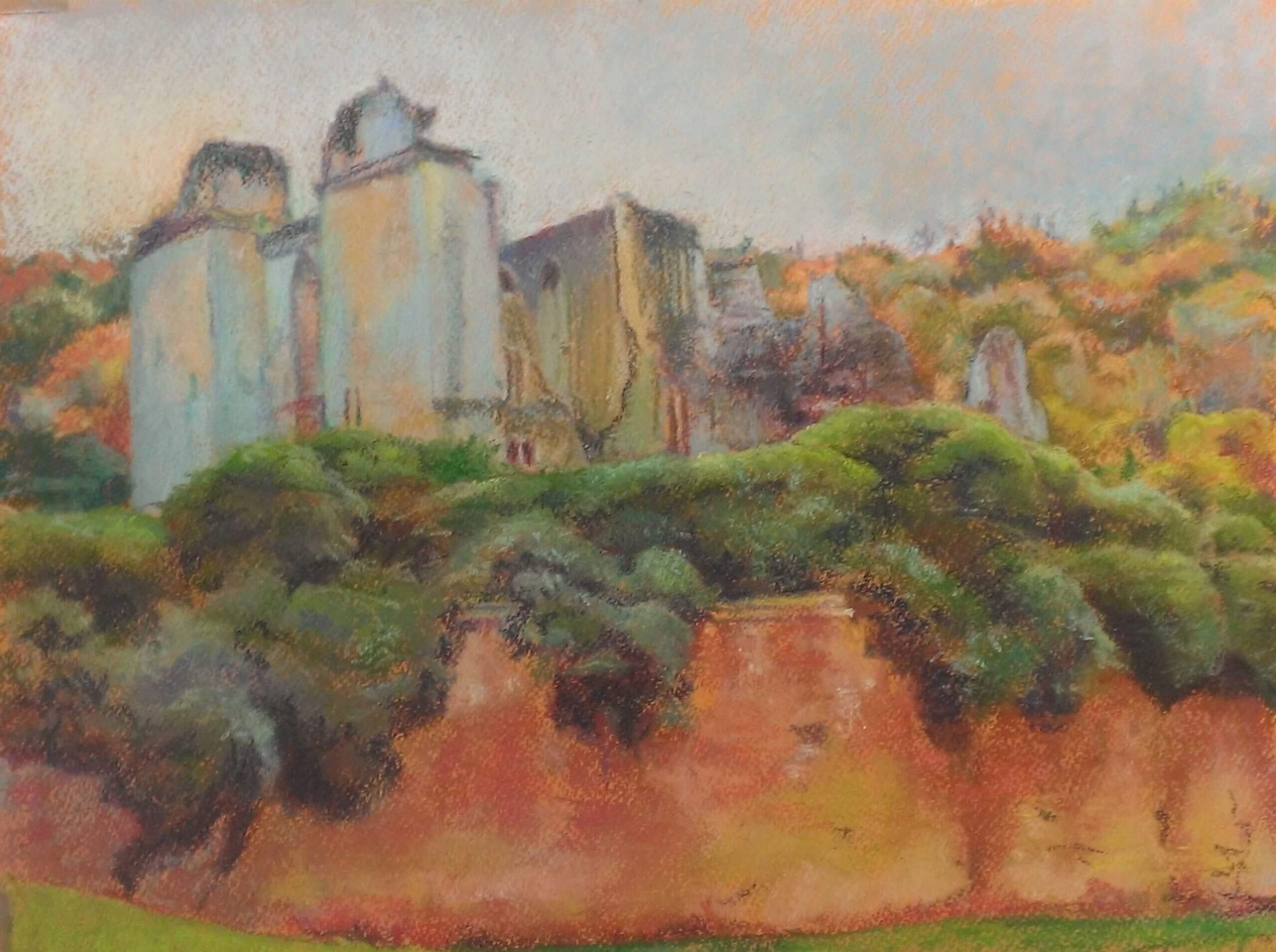
Last Rays
Pastel on paper
Set in the Wiltshire countryside by a lake, Old Wardour Castle was built in the 14th century as a lightly fortified luxury residence becoming one of the most daring and innovative homes in Britain. In May 1643 Lady Blanche Arundell, was left to defend the castle after refusing a search for Royalists. Following a siege of five days the castle was threatened with complete destruction. Although agreeing to surrender, Lord Arundell’s son, Henry, blew up much of it a year later.
2017
Framed behind glass
TBC
£425
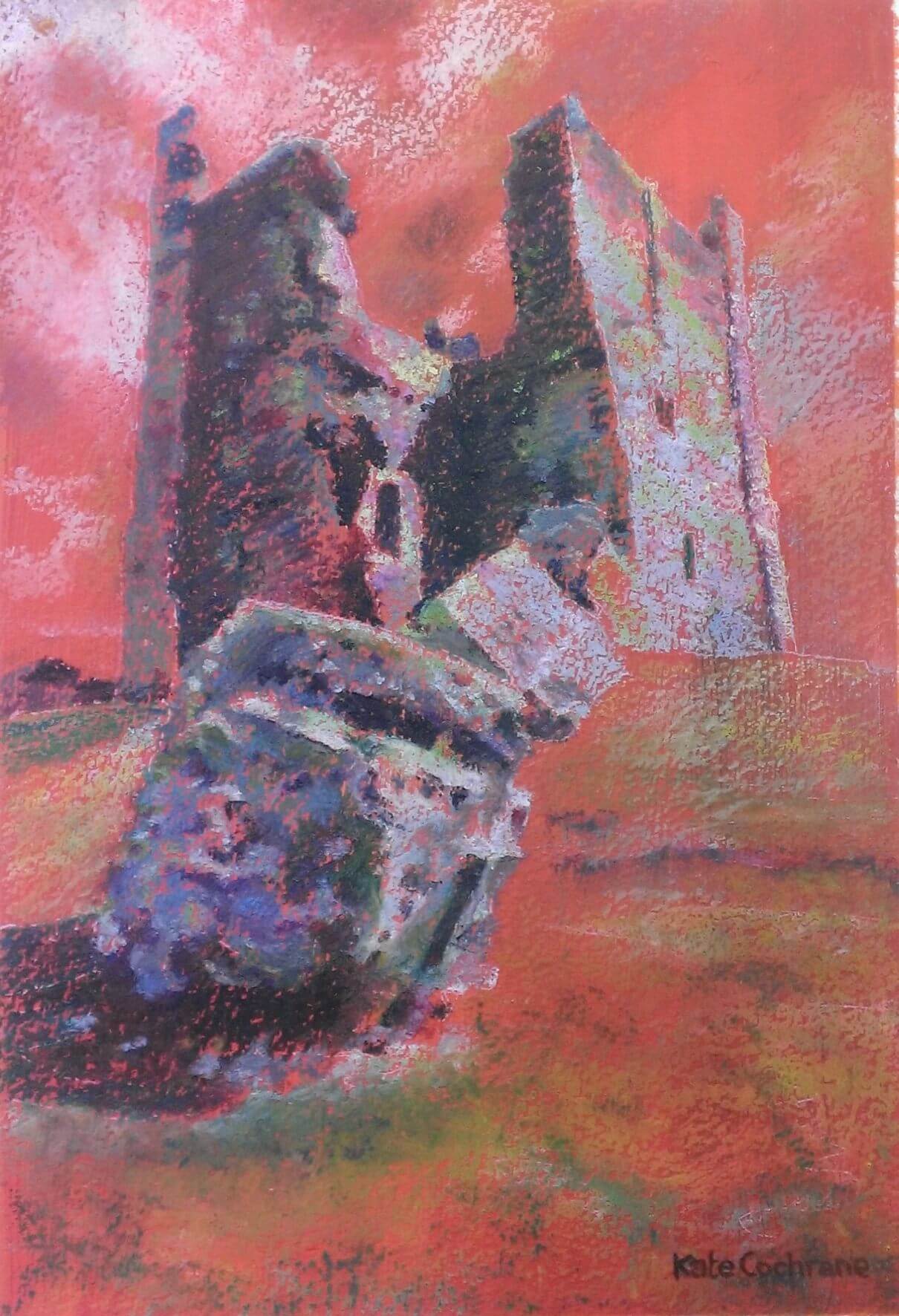
Brough Castle, Red
Oil pastel on paper
Brough Castle in Cumbria was constructed in 1092 to protect a key route through the Pennines, destroyed in 1174 by the Scots, and then rebuilt after the Great Revolt.
The Great Hall was burnt down during a Christmas party hosted by Henry Clifford in 1521. Rebuilt 1660; rendered uninhabitable again by fire a few years later. In the 1800s the masonry started to collapse, and it was given to the state in 1921.
I particularly liked the massive block of masonry broken off round the back of the castle ruin.
2016
A4
Framed behind glass
£320
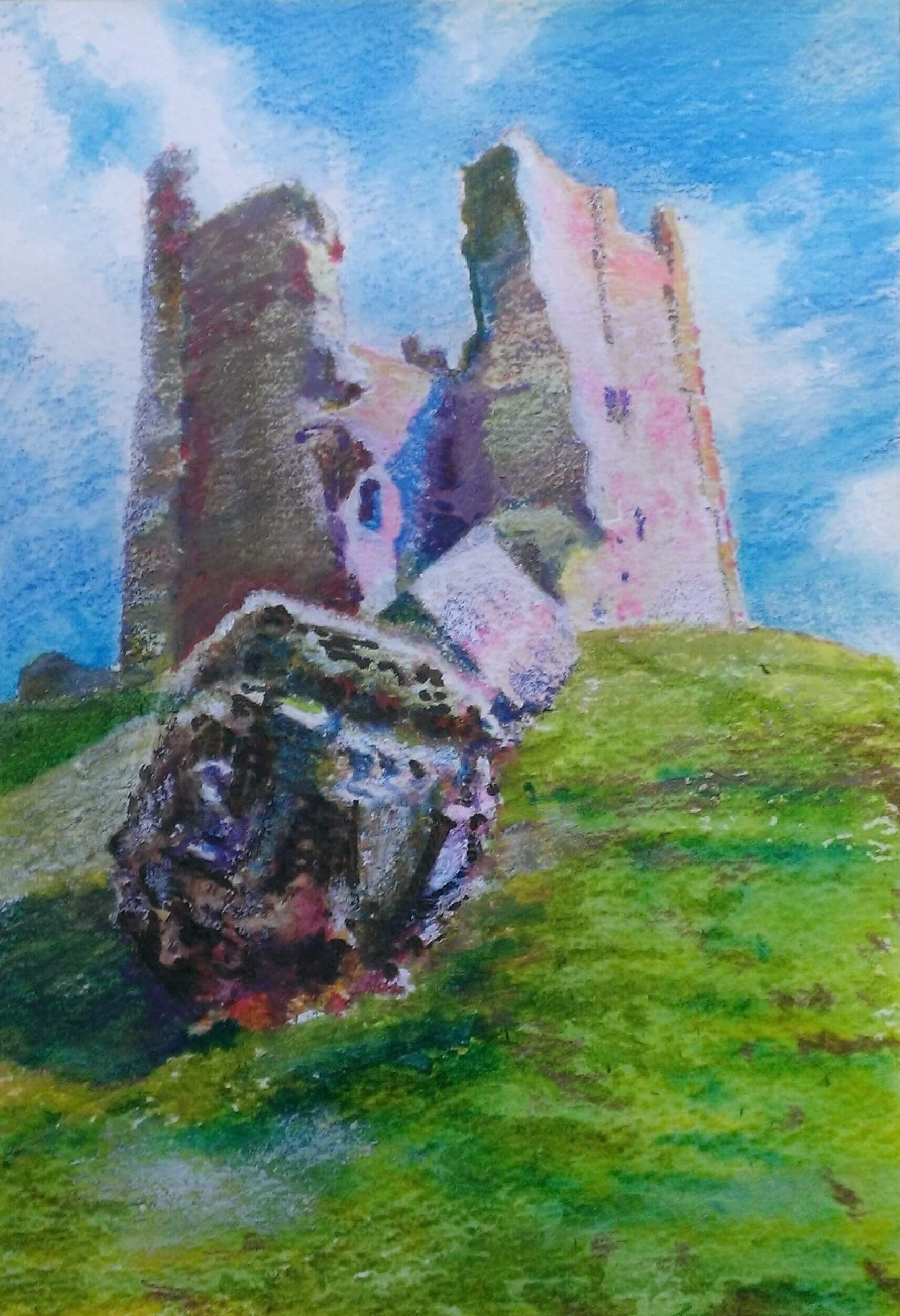
Brough Castle study
2016
24 x 30 cm
Framed behind glass
£260